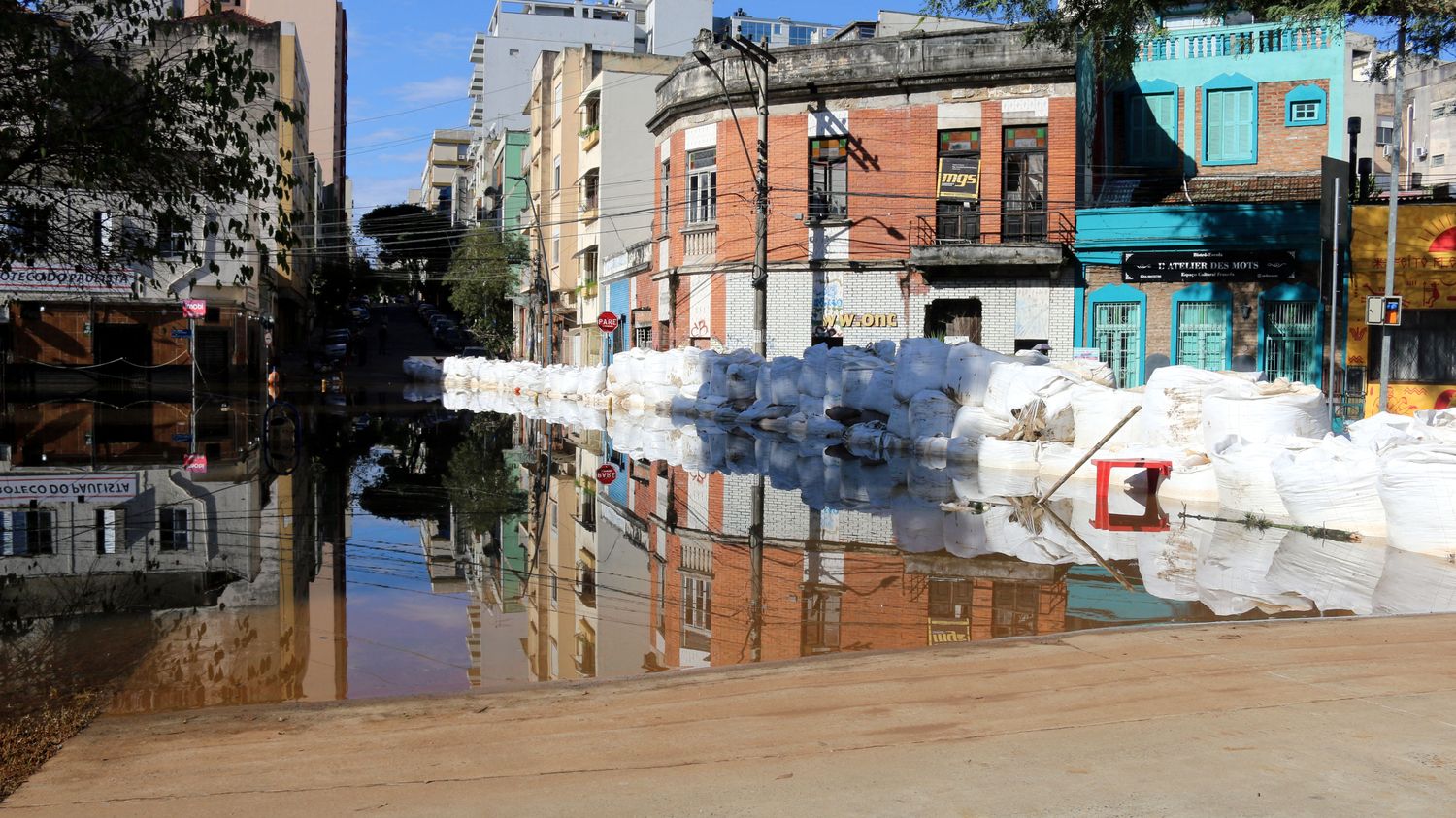In southern Brazil, residents are facing unprecedented flooding. The city of Porto Alegre, the capital of the state of Rio Grande do Sul, is still under water.

Published
Reading time: 2 min

Two weeks after flooding began in southern Brazil, a large part of the city of Porto Alegre is still underwater. In the state of Rio Grande do Sul, 600,000 residents were directly affected by what will be remembered as the region’s most serious climate tragedy.
In Porto Alegre, 15,000 people had to flee their homes. In the historic center, the municipal market, symbol of the city, is only accessible by boat. In front of the doors of the shops of this central market, Adriana Kauer thinks of the 105 traders who lost everything: “I don’t see doors but people. Behind each of these doors, there is a colleague and a family.”
Adriana Kauer has run a baking equipment store for 40 years in the central market. Today, his store is still completely underwater, but his house was spared. So she welcomed the families of two of her employees into their home.
The shopkeeper will never forget the tragedy: “We are all traumatized. Today, the sound of the rain falling is distressing. It keeps me from sleeping at night.” From outside the historic building, chairs and tables can be seen floating in the galleries. Adriana had just gone into debt to expand her store, which she had reopened just two months ago. “I hope that the municipality will help us by suspending rent payments for businesses in the market because it is obvious that no one will have the means to pay”explains Adriana Kauer.
“The help we are going to need goes well beyond reconstruction. The traders have nothing left. How will they be able to start again?”
Adriana Krauer, trader in Porto Alegreat franceinfo
None of the inhabitants of Porto Alegre imagined the scale of the disaster. During these floods, the level of Lake Guaiba exceeded five meters, more than the last record, dating from 1941. A tragedy which could have been avoided by the public authorities, according to Joao da Silva: “Of the 23 pump stations, to drain the water and send it back to the river, only seven were working. So there was negligence, poor maintenance.”
“I hope that citizens will think moresays Bruna Martello, who manages the Guernica bar in the center, and that they will realize that mismanagement is the fault of the region and the municipality and that they will express themselves during the municipal election this year.” The management of the crisis will be particularly scrutinized by citizens, who will elect the city’s next mayor in October.
